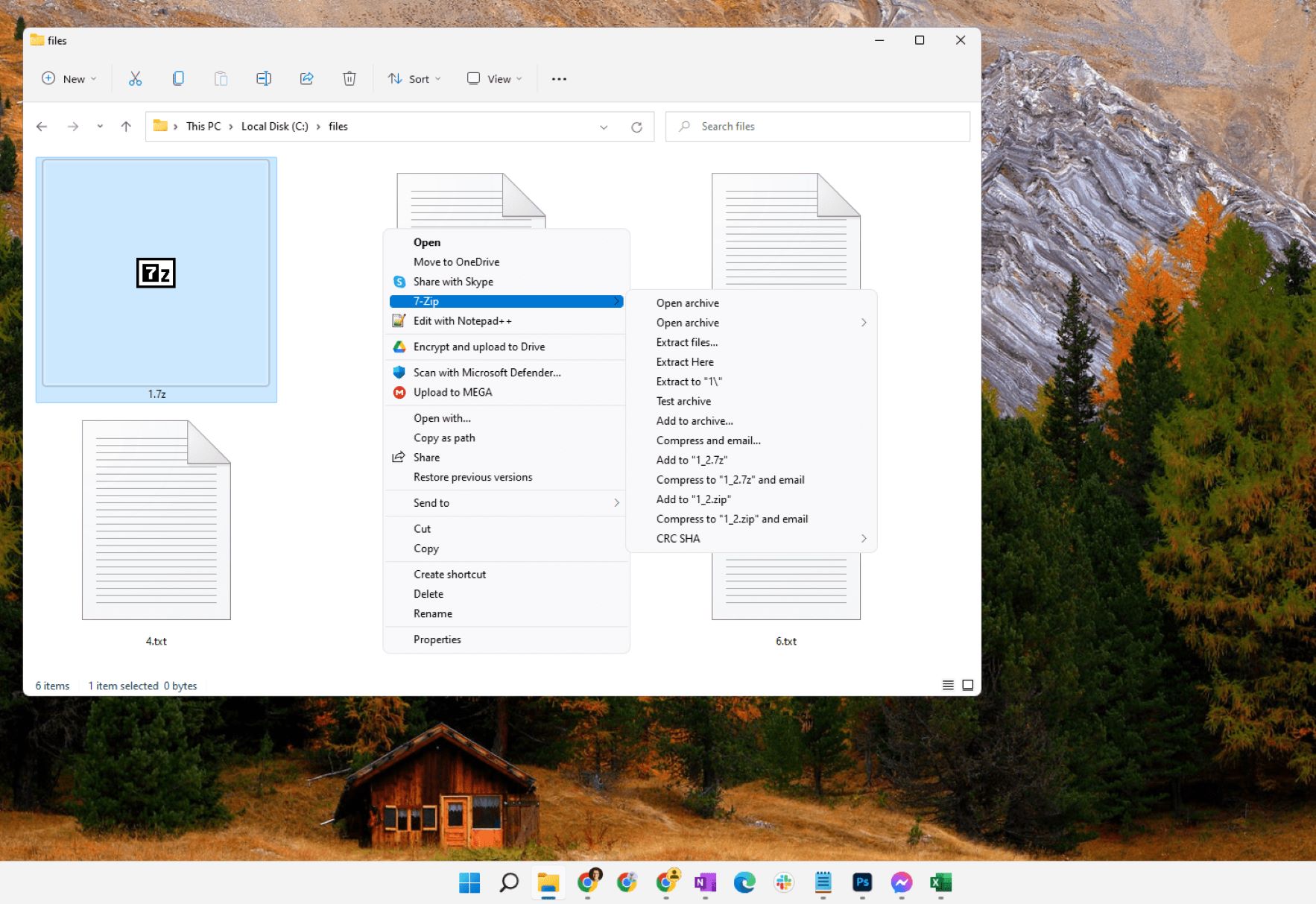Introduction
Downloading RAR files is a common task for anyone who frequently works with digital files. Whether you’re a student downloading study materials, a professional getting access to important documents, or a movie enthusiast grabbing the latest releases, knowing how to download RAR files is essential.
If you’re new to RAR files, you might be wondering what exactly they are. RAR stands for “Roshal Archive,” named after its creator, Eugene Roshal. It is a file format that allows multiple files to be compressed into a single archive, making it easier to transfer or store large amounts of data. Similar to ZIP files, RAR files also reduce file sizes, making downloads faster and saving storage space.
The versatility of RAR files makes them a popular choice for various purposes, such as sharing software, documents, media files, and more. They are widely used because they offer strong compression ratios, allowing users to pack multiple files into a smaller, more manageable package.
In this article, we’ll explore different methods for downloading RAR files. Whether you’re a Windows, Mac, or Linux user, you’ll find practical tips and techniques to help you download and access the contents of RAR files seamlessly.
Before we dive into the methods, it’s important to note that downloading and accessing RAR files should always be done with caution. Like any other downloaded files, RAR files can potentially contain malware or malicious content. It’s crucial to take necessary precautions, such as using reliable sources, scanning files for viruses, and keeping your antivirus software up to date.
Now that we have a brief understanding of RAR files and their importance, let’s explore the various methods you can use to download them.
What is a RAR file?
A RAR file is a type of archive format that is used to compress and store one or more files into a single package. It is named after its creator, Eugene Roshal, and is widely used for file compression and distribution. RAR files have a .rar extension and can be opened using various software programs.
Unlike regular files that take up space on your computer or storage device, RAR files are designed to reduce file size by compressing the data within. This compression is achieved by using advanced algorithms that eliminate redundant or unnecessary information from the files, resulting in a smaller overall size.
One of the main advantages of using RAR files is that they allow you to bundle multiple files into a single archive. This makes it easier to organize and transfer large amounts of data. For example, if you have a folder containing several documents, images, and videos, you can create a RAR file that includes all of these files. This not only saves space but also makes it more convenient to share or send the files as a single package.
In addition to their compression capabilities, RAR files also offer options for adding password protection and encryption. This can be useful when sharing sensitive or confidential information and enhances the security of the archived contents.
When it comes to compatibility, RAR files can be opened on most operating systems, including Windows, macOS, and Linux. However, it’s important to note that some operating systems may not have built-in support for RAR files, requiring the installation of third-party software.
In summary, a RAR file is a compressed archive format that allows multiple files to be combined into a single package. It offers benefits such as file size reduction, organization, and security options. Understanding what a RAR file is and how it works is crucial for effectively downloading, managing, and accessing files in this format.
Why download RAR files?
There are several reasons why downloading RAR files can be beneficial in various scenarios. Here are some key advantages:
1. File Compression: RAR files use advanced compression algorithms that significantly reduce the size of the original files. This makes downloading and transferring files faster and more efficient. It also helps in saving valuable storage space on your devices.
2. Bundling Multiple Files: RAR files allow you to combine multiple files into a single archive. This makes it easier to organize and manage related files, especially when sharing them with others. Instead of sending multiple individual files, you can simply share the single RAR file.
3. File Integrity: RAR files have built-in error detection and correction capabilities. This means that if any part of the file gets corrupted during the download process, the file can still be repaired and extracted successfully.
4. Password Protection: RAR files offer the option to set a password for accessing the contents. This provides an additional layer of security, especially when sharing sensitive or confidential files. Only individuals with the correct password will be able to extract and view the files.
5. Splitting Large Files: RAR files can be split into smaller parts, which can be useful when dealing with large files. This allows for easier uploading, downloading, and transferring of files, particularly when there are limitations on file size or storage capacity.
6. Segmented Compression: RAR files can compress large files into smaller segments, making it easier to transfer them over networks or store them on removable media such as USB drives. This segmented compression allows for more efficient handling of large files.
7. Consistent File Structure: RAR files retain the original file structure, preserving the folder hierarchy and file organization. This makes it convenient to extract and access the files as they were originally organized.
Overall, downloading RAR files provides numerous benefits, including file compression, organization, security, and efficient file transfer. Understanding the advantages of downloading RAR files can help you make better use of this file format and optimize your digital file management.
Getting started
Before you can start downloading and accessing RAR files, there are a few things you’ll need to ensure you have in place:
1. Internet Connection: Make sure you have a stable internet connection to facilitate the download process. A high-speed and reliable connection will ensure that your RAR files are downloaded smoothly and without interruptions.
2. Compatible Device: Ensure that you have a device capable of downloading and opening RAR files. Whether you’re using a computer, laptop, or mobile device, check that the operating system is compatible with RAR files and has appropriate software or apps installed.
3. RAR File Extraction Software: To extract the contents of a RAR file, you’ll need file extraction software installed on your device. There are several free and paid options available, such as WinRAR, 7-Zip, and WinZip. Choose a software that is compatible with your operating system and suits your needs.
4. Antivirus Software: As mentioned earlier, it’s essential to have up-to-date antivirus software installed on your device. This will help protect against potential threats that may be embedded in downloaded RAR files, ensuring the safety of your device and data.
5. Reliable Source: When downloading RAR files, it’s vital to use trusted and reputable sources. Be cautious when visiting unfamiliar websites or downloading files from unknown sources, as these may contain malicious content. Stick to reliable sources, such as official websites, reputable file-sharing platforms, or trusted individuals.
6. Storage Space: Ensure that you have enough available storage space on your device to accommodate the downloaded RAR files. Depending on the size and number of files within the RAR archive, they may take up significant storage space once extracted.
Once you have these essentials in place, you’re ready to start downloading and accessing RAR files. In the following sections, we’ll explore different methods that you can use to extract the contents of RAR files based on your preferences and device compatibility.
Option 1: Using a file extraction software
One of the most common and straightforward methods for downloading and accessing RAR files is by using dedicated file extraction software. Here’s how you can do it:
Step 1: Install extraction software: Start by downloading and installing a reliable file extraction software such as WinRAR, 7-Zip, or WinZip. These software programs are specifically designed to handle RAR files and can be easily found and downloaded from their official websites.
Step 2: Locate the RAR file: Once the extraction software is installed, locate the RAR file you want to download on your device. This can be done by navigating to the folder or location where the RAR file is saved.
Step 3: Open the RAR file: Right-click on the RAR file and select the “Extract” or “Extract Here” option from the context menu. This will launch the file extraction software and initiate the extraction process.
Step 4: Choose the destination folder: The file extraction software will prompt you to choose a destination folder where the extracted files will be saved. Select a suitable location on your device and click the “Extract” or “OK” button to proceed.
Step 5: Wait for extraction to complete: The software will start extracting the contents of the RAR file to the specified destination folder. The time taken will depend on the size of the RAR file and the speed of your device. Once the extraction is complete, you will have access to the individual files contained within the RAR archive.
Step 6: Access the extracted files: Navigate to the destination folder where the extracted files are saved. You can now open, view, or modify the extracted files as needed, just like any other regular files on your device.
Using a file extraction software is a reliable and convenient method for downloading and accessing RAR files. It provides full control over the extraction process and allows you to manage the extracted files efficiently. Remember to keep your extraction software updated to ensure compatibility with newer RAR file versions and enhanced performance.
Option 2: Using online file extraction tools
If you don’t want to install any additional software on your device, or if you’re using a device that doesn’t support traditional file extraction software, an alternative option is to use online file extraction tools. These web-based tools allow you to extract the contents of RAR files directly from your browser. Here’s how:
Step 1: Find an online file extraction tool: Use a search engine to find reputable online file extraction tools that support RAR files. Some popular options include Online-Convert, B1 Online Archiver, and Unzip-Online. These tools allow you to upload and extract RAR files without the need for software installation.
Step 2: Choose the online extraction tool: Select an online file extraction tool that suits your requirements. Ensure that it supports the RAR file format and offers the features you need, such as password protection or file splitting.
Step 3: Upload the RAR file: Access the chosen online extraction tool’s website and look for the option to upload files. Click on the upload button and select the RAR file from your device’s storage location. Alternatively, some tools allow you to drag and drop the RAR file directly into the browser window.
Step 4: Start the extraction process: Once the RAR file is uploaded, click on the “Start Extraction” or similar button to initiate the extraction process. The online tool will begin extracting the contents of the RAR file on their servers.
Step 5: Wait for extraction to complete: The time taken for extraction will depend on the size of the RAR file and the speed of your internet connection. The online extraction tool will provide a progress indicator to let you know when the extraction is complete.
Step 6: Download the extracted files: After the extraction process is finished, the online tool will provide a link or button to download the extracted files. Click on the download link, and the files will be saved to your device.
Step 7: Access the extracted files: Once the files are downloaded, navigate to the location where they are saved on your device. You can now open, view, or edit the extracted files just like any other regular files.
Using online file extraction tools offers flexibility and convenience, particularly if you don’t have access to file extraction software or prefer not to install additional applications on your device. However, keep in mind that the availability and reliability of online tools can vary, and they may have limitations on file size or processing speed. Additionally, ensure that you choose trusted and secure online extraction tools to protect your files and privacy.
Option 3: Using a command-line tool
If you prefer a more advanced and efficient method for downloading and accessing RAR files, you can use a command-line tool. Command-line tools provide you with more control and flexibility over the extraction process, making it a preferred choice for advanced users and automation. Here’s how to use a command-line tool to extract RAR files:
Step 1: Install a command-line tool: Start by downloading and installing a command-line tool that supports RAR file extraction. Some popular options include the unrar command-line tool for Windows and Linux or the unrar package for macOS.
Step 2: Open the command prompt or terminal: Launch the command prompt (Windows) or terminal (Linux/macOS) on your device. You can usually access these tools by searching for “Command Prompt” or “Terminal” in the start menu or applications folder.
Step 3: Navigate to the location of the RAR file: Use the “cd” (change directory) command to navigate to the folder or directory where the RAR file is located. For example, if the RAR file is on your desktop, you would use the command “cd Desktop” to navigate to the desktop directory.
Step 4: Extract the RAR file: Use the appropriate command-line tool command to extract the contents of the RAR file. For example, with unrar, you would use the command “unrar x filename.rar” (replace “filename.rar” with the actual name of the RAR file).
Step 5: Specify extraction options (if necessary): You can add additional options to the command if needed, such as specifying a destination folder for the extracted files or providing a password for password-protected RAR files. Refer to the documentation or help manual of the specific command-line tool for the available options.
Step 6: Wait for extraction to complete: The command-line tool will start extracting the contents of the RAR file to the specified location. The extraction progress will be displayed in the command prompt or terminal window, allowing you to monitor the process.
Step 7: Access the extracted files: Once the extraction is complete, navigate to the location where the files are extracted. You can now open, modify, or manage the extracted files using the file explorer or any other desired application.
Using a command-line tool for RAR file extraction provides advanced functionality and flexibility, making it a suitable choice for power users and automation processes. However, it may have a steeper learning curve compared to other methods, and familiarity with command-line interfaces is recommended. Always consult the documentation or help resources of the specific command-line tool for more detailed instructions and available options.
Importance of scanning downloaded RAR files
When it comes to downloading RAR files or any other files from the internet, it is crucial to prioritize the safety and security of your device and data. Scanning downloaded RAR files for malware and viruses is of utmost importance. Here’s why:
1. Protection against malware: RAR files can potentially contain malicious software or viruses. Cybercriminals often disguise malware within seemingly harmless files to trick users into downloading and executing them. Scanning downloaded RAR files helps to identify and prevent the installation of malware on your device.
2. Safeguarding personal information: Malicious RAR files may aim to steal personal information, such as login credentials or financial details, from your device. By scanning downloaded RAR files, you can detect and prevent attempts to compromise your sensitive data and safeguard your privacy.
3. Preventing system vulnerabilities: RAR files with embedded malware can exploit vulnerabilities in your device’s operating system or software. Scanning downloaded RAR files helps identify and mitigate such vulnerabilities, reducing the risk of compromising your device’s security.
4. Maintaining device performance: Malware-infected RAR files can negatively impact your device’s performance, causing slowdowns, crashes, or freezes. By scanning downloaded RAR files, you can identify and remove any potential threats, helping to maintain optimal performance levels.
5. Protecting network security: Malware in RAR files can also spread to other devices on your network, compromising the security of all connected devices. Scanning downloaded RAR files helps prevent the spread of malware and ensures the overall security of your network.
6. Identifying false-positive detections: It’s important to note that scanning tools may occasionally generate false-positive detections, flagging safe files as potentially harmful. However, it is still crucial to scan downloaded RAR files to lower the risk of genuine threats. If a file is flagged, you can investigate further or seek professional assistance to validate its safety.
7. Ensuring compliance with security policies: In certain professional environments or organizations, there may be strict security policies in place that require scanning downloaded files. Adhering to these policies helps ensure compliance and minimizes the risk of security breaches.
By consistently scanning downloaded RAR files, you take proactive measures to safeguard your device, protect your data, and mitigate potential risks posed by malware and viruses. Keep your antivirus software frequently updated, and perform regular scans to ensure a secure computing environment.
Tips for successful RAR file downloads
Downloading RAR files can sometimes be a complex process, especially if the files are large or if there are multiple archives to manage. To ensure successful RAR file downloads, here are some helpful tips:
1. Use a reliable internet connection: Ensure that you have a stable and high-speed internet connection before initiating any RAR file downloads. A slow or intermittent connection can result in incomplete or corrupted downloads.
2. Verify the source: Always download RAR files from reputable and trustworthy sources. Verify the authenticity of the source to reduce the risk of downloading files that may contain malware or corrupted data.
3. Check for file integrity: Before extracting the contents of a RAR file, verify the integrity of the downloaded file. Some file extraction software or online tools provide options to check the file’s integrity to ensure it hasn’t been corrupted during the download process.
4. Organize your downloads: Keep your downloaded RAR files in a specific folder or location to maintain organization and make it easier to find the files when needed. Use clear and descriptive file names or labels to identify the content of each archive.
5. Use parallel or segmented downloads: If you encounter slow download speeds, consider using a download manager or a tool that supports parallel or segmented downloading. This can improve download speeds by splitting the RAR file into multiple parts and downloading them simultaneously.
6. Enable resumable downloads: To avoid starting the download from scratch if it gets interrupted, make sure the download tool or browser you’re using supports resumable downloads. This allows you to resume the download from where it left off, saving time and bandwidth.
7. Monitor storage space: Ensure that you have sufficient storage space available on your device to accommodate the downloaded RAR files. Large files or multiple archives can take up significant space once extracted.
8. Consider using a download manager: A download manager can simplify the download process by providing additional features such as pause/resume, scheduling, and bandwidth optimization. It can enhance the overall download experience, especially for large or complex RAR file downloads.
9. Stay vigilant and scan for viruses: Always scan downloaded RAR files for viruses and malware, even if they appear to be from a trusted source. Use up-to-date antivirus software to ensure the safety of your device and data.
10. Keep your extraction software updated: Regularly update your RAR file extraction software to ensure compatibility with newer RAR file versions and to benefit from enhanced features and security patches. This helps prevent any compatibility issues or vulnerabilities.
By following these tips, you can enhance the success of your RAR file downloads, ensuring smooth and secure extraction of the archived contents. It’s important to stay informed about best practices and adapt your download process to suit your specific needs and circumstances.
Conclusion
Downloading and accessing RAR files is a common task in today’s digital era, and understanding the various methods and best practices can greatly enhance your file management capabilities. RAR files provide a convenient way to compress and store multiple files into a single archive, reducing file size and making it easier to share and transfer data.
In this article, we explored three different options for downloading and accessing RAR files. The first option involved using dedicated file extraction software, which offers a reliable and user-friendly approach. The second option focused on using online file extraction tools, providing flexibility and convenience for those who prefer not to install additional software. Lastly, we explored the use of command-line tools for advanced users seeking more control and customization.
We also highlighted the importance of scanning downloaded RAR files for malware and viruses. Taking this precautionary step helps protect your device from potential threats, safeguarding your personal information and maintaining system security. Additionally, we provided tips for successful RAR file downloads, including using a reliable internet connection, verifying the source, organizing downloads, and staying vigilant with antivirus scans.
Remember to always prioritize the safety and security of your device and data when downloading RAR files. Use trusted sources, keep your antivirus software up to date, and follow best practices to ensure a smooth and secure file management experience.
By familiarizing yourself with different methods for downloading RAR files and implementing these tips, you’ll be able to efficiently handle RAR archives, extract their contents, and manage your digital files effectively. Embrace the power of RAR files and elevate your file management capabilities in the digital age.

























